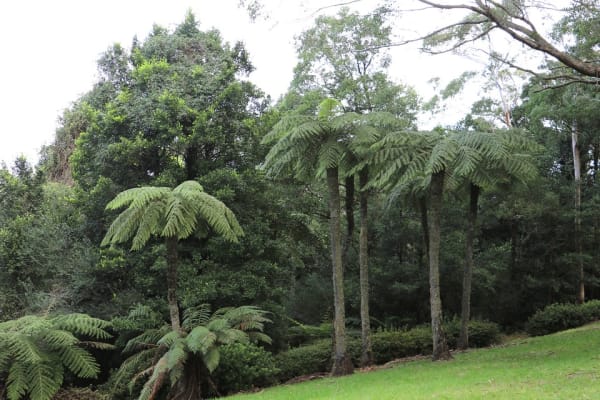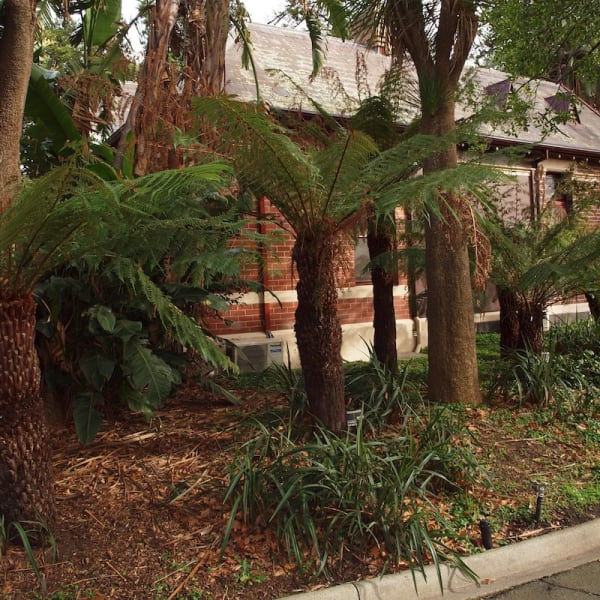If you're inclined to wander around the Illawarra rainforests, you'd be aware of the majestic presence of the local Tree Ferns.
They grow along the many creeklines that run from east to west down the escarpment to the sea, and are also widespread in subtropical and warm temperate rainforests from the north to the south of the region, particularly along the escarpment.
Tree Ferns are trees, and they're also ferns, which makes them almost instantly recognisable, due to their long trunk (or caudex) which lacks any branching, and their distinctive ferny fronds, which only occur at the very top of the plant. A majestic old tree fern can be 10m tall or even taller.

There are actually four local Tree Fern species, each subtly different from the others. The most common is the Rough Tree-fern (Cyathea australis) pictured above, which is widespread around the region in a range of conditions.
Other local Tree Ferns include Cooper's Tree Fern (Cyathea cooperi), which is very fast-growing and is distinguished by the diamond- or lozenge-shaped marks on its trunk/caudex, left where old fronds have fallen off.
Prickly Tree Fern (Cyathea leichhardtiana) is uncommon in the region and characterised by its prickly stipes (the stems of each frond) and very narrow trunk/caudex.
Last but not least is the Soft Tree Fern, which is in a different genus, and known in scientific terms as Dicksonia antarctica. It requires damper conditions than the Tree Ferns in Cyathaceae, and can be distinguished by its relatively thick trunk/caudex and by the number brown fibrous roots at its base.
So much for the details about individual Tree Ferns. Something important to know about them as a group is that they have immense ecological significance. Their high water content and propensity for their fronds to densely shade the rainforest floor means that they contribute to reducing forest flammability in the ecosystems where they naturally occur. A 2023 study looking at the impacts of invasive Sambar Deer on Victorian forests concluded that browsing of Tree Ferns increased the overall flammability of those forests (see reference below).

Aside from their value in reducing fire risk in natural forested areas, local Tree Ferns make excellent garden and landscaping plants, although they do generally require deep soil, good mulching and regular water weather from a natural source of additional watering. They're a great option in the narrow strips of land between two houses, which are often shaded by high walls set close together.
I've yet to see a Tree Fern grown as an indoor plant, but I'm sure it would be possible with sufficient space and ingenuity.
Reference
Wills, T.J., Retallick, R.W.R, Greet, J., Bennett, A. (2003) Browsing by non-native Sambar Deer dramatically affects forest structure. Forest Ecology and Management 534, September 2023.





